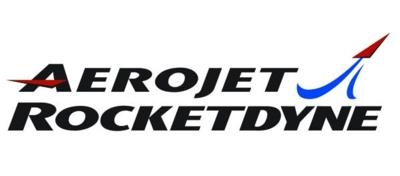Mon, Dec 08, 2014
Large TelComm Satellite Placed Into Orbit
Aerojet Rocketdyne has completed its 100th geosynchronous satellite apogee insertion using its iridium/rhenium High Performance Apogee Thruster (HiPAT), including first and second generation design configurations. The successful insertion was achieved with a large geosynchronous telecommunications satellite, built by commercial satellite manufacturer, SSL, which was recently launched. The milestone will be commemorated by a ceremony at the company's Redmond, Washington facility, with SSL officials in attendance.

The R-4D-15 HiPAT(TM) performs orbit-raising maneuvers for many of the world's communication satellite platforms. Variants of the R-4D have played critical roles in NASA missions such as Cassini's exploration of Saturn and its moons; as well as the European Space Agency and the Japan Aerospace Exploration Agency International Space Station re-supply vehicles.
"The model R-4D-15 HiPAT(TM) is the highest-performing rocket engine in its class," said Warren Yasuhara, vice president of Space Systems at Aerojet Rocketdyne. "By offering a higher specific impulse than
comparable engines, the HiPAT(TM) reduces the total amount of fuel required for the mission and allows spacecraft operators to trade propellant mass for high-value payload."
The R-4D product line includes a series of liquid bipropellant engines that use the propellant combination of nitrogen tetroxide (MON-3) oxidizer and monomethylhydrazine (MMH) fuel. These propellants are storable at room temperature and do not require a separate ignition source, simplifying many higher-level integration issues while still providing high performance.
The R-4D was originally developed as a thruster for the reaction control systems for the Apollo Service Module and the Lunar Excursion Module. The HiPAT is the fifth generation of the R-4D 100 lbf thrust class of liquid bipropellant engines and the second generation of high performance iridium/rhenium engines. "This engine has incredible lineage," said Steve Harper, Bipropellant Propulsion Product Line manager at Aerojet Rocketdyne. "Dating back to Apollo, Aerojet-Rocketdyne's R-4D family of 100 lbf bipropellant engines holds an impressive record of 100 percent mission success throughout five decades of service in space."
More News
Pilot Also Reported That Due To A Fuel Leak, The Auxiliary Fuel Tanks Were Not Used On June 4, 2025, at 13:41 eastern daylight time, a Piper PA-23, N2109P, was substantially damage>[...]
From 2023 (YouTube Edition): Reflections on War’s Collective Lessons and Cyclical Nature The exigencies of war ought be colorblind. Inane social-constructs the likes of racis>[...]
Pilot Reported That He Was Unfamiliar With The Single Seat Amateur-Built Airplane And His Intent Was To Perform High-Speed Taxi Testing Analysis: The pilot reported that he was unf>[...]
From 2023 (YouTube Edition): First Kits to Ship October 2023 Having formerly resurrected the storied shape of the Ryan ST—in effigy, anyway—Montrose, Colorado-based Tim>[...]
Performance-Based Navigation (PBN) [ICAO] Area navigation based on performance requirements for aircraft operating along an ATS route, on an instrument approach procedure or in a d>[...]
 NTSB Prelim: Piper PA-23
NTSB Prelim: Piper PA-23 Classic Aero-TV: One Mans Vietnam
Classic Aero-TV: One Mans Vietnam NTSB Final Report: Capella Aircraft Corp FW1C50
NTSB Final Report: Capella Aircraft Corp FW1C50 Classic Aero-TV: Timber Tiger Touts Curtiss Jenny Replicas
Classic Aero-TV: Timber Tiger Touts Curtiss Jenny Replicas ANN's Daily Aero-Term (07.04.25): Performance-Based Navigation (PBN) [ICAO]
ANN's Daily Aero-Term (07.04.25): Performance-Based Navigation (PBN) [ICAO]



